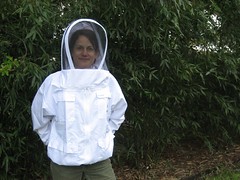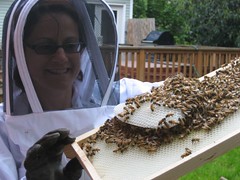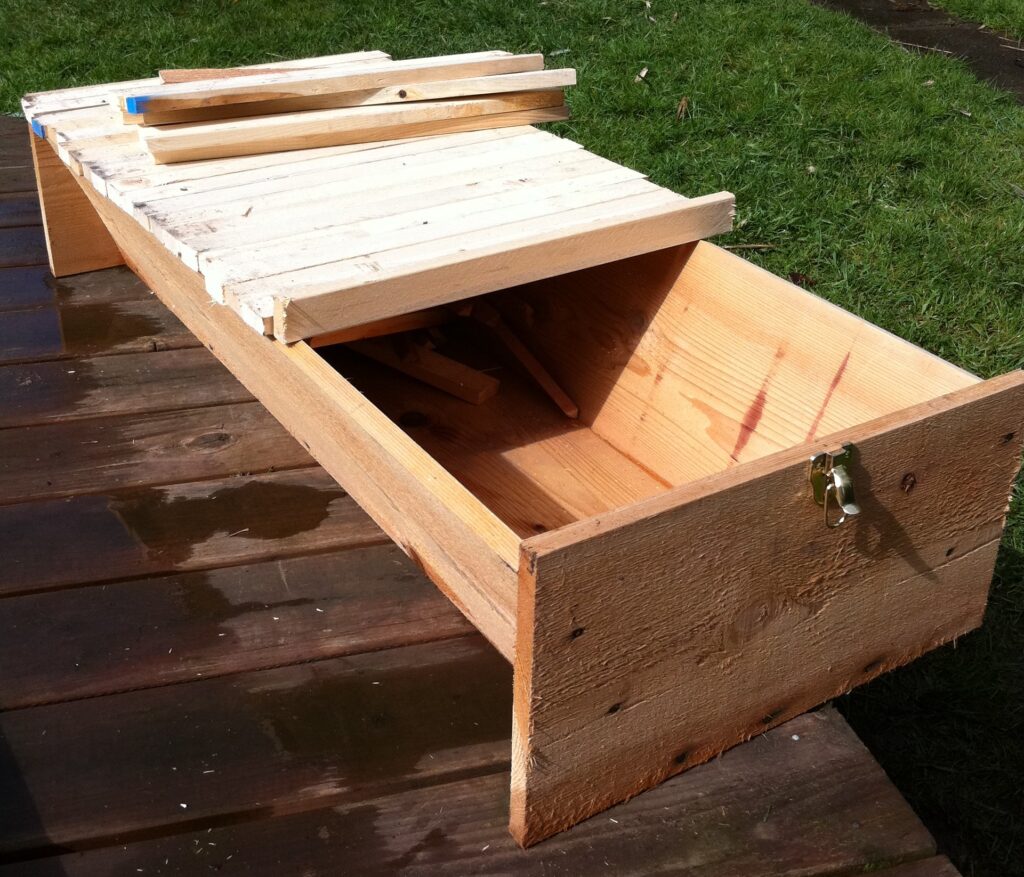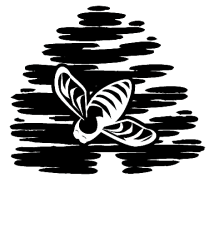This weekend was the one week mark for the two new colonies in their new home, so Michelle and I cracked ’em open to see how things were going. For Michelle, this was her first opportunity to actually work one on one with the bees (I took camera duty), and, more importantly, to show off her new “Bee Wrangler” bee jacket for the blogging public. Ladies and gentleman, may I introduce Seattle’s newest apiarist, Michelle Dana Schwartz [applause]. Go on, sweetheart, take a bow:

Anyhoo, enough of that girl, back to 10,000 or so other girls this blog is focused on. Short story is, all’s well. They sucked down the gallon or so of sugar syrup that we had given them last week, which is a good thing, because they’ve got lots of work to do. Here are a few quick photos of Michelle opening up the hive and making sure the queen got out of her cage OK (mmm…marshmallows). The blurry one on the right is a frame of wax that they’ve begun to work. It’s not a great photo, but you can see how the honeycomb pattern is a higher in the middle: that’s what they’ve been up to this week, drawing out the wax into a proper honeycomb structure so the queen has somewhere to lay her eggs and what have you.
 Earlier this week, I did as Jean instructed and left the moldy frames from last year out in the sun, then smelled the bag (Michelle drew the long straw on that one). Thankfully, it did not smell foul, so Michelle added the moldy but foulbrood-free frames from last year to the hives. The bees, Jean assured me, will industriously clean the frames of all mold and make themselves a nice home. I checked back this morning, and it appears she’s right, as you can see in the picture to the right that they have begun to haul out debris.
Earlier this week, I did as Jean instructed and left the moldy frames from last year out in the sun, then smelled the bag (Michelle drew the long straw on that one). Thankfully, it did not smell foul, so Michelle added the moldy but foulbrood-free frames from last year to the hives. The bees, Jean assured me, will industriously clean the frames of all mold and make themselves a nice home. I checked back this morning, and it appears she’s right, as you can see in the picture to the right that they have begun to haul out debris.
Perhaps when they’re done, I’ll have them start on my attic.











